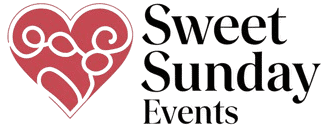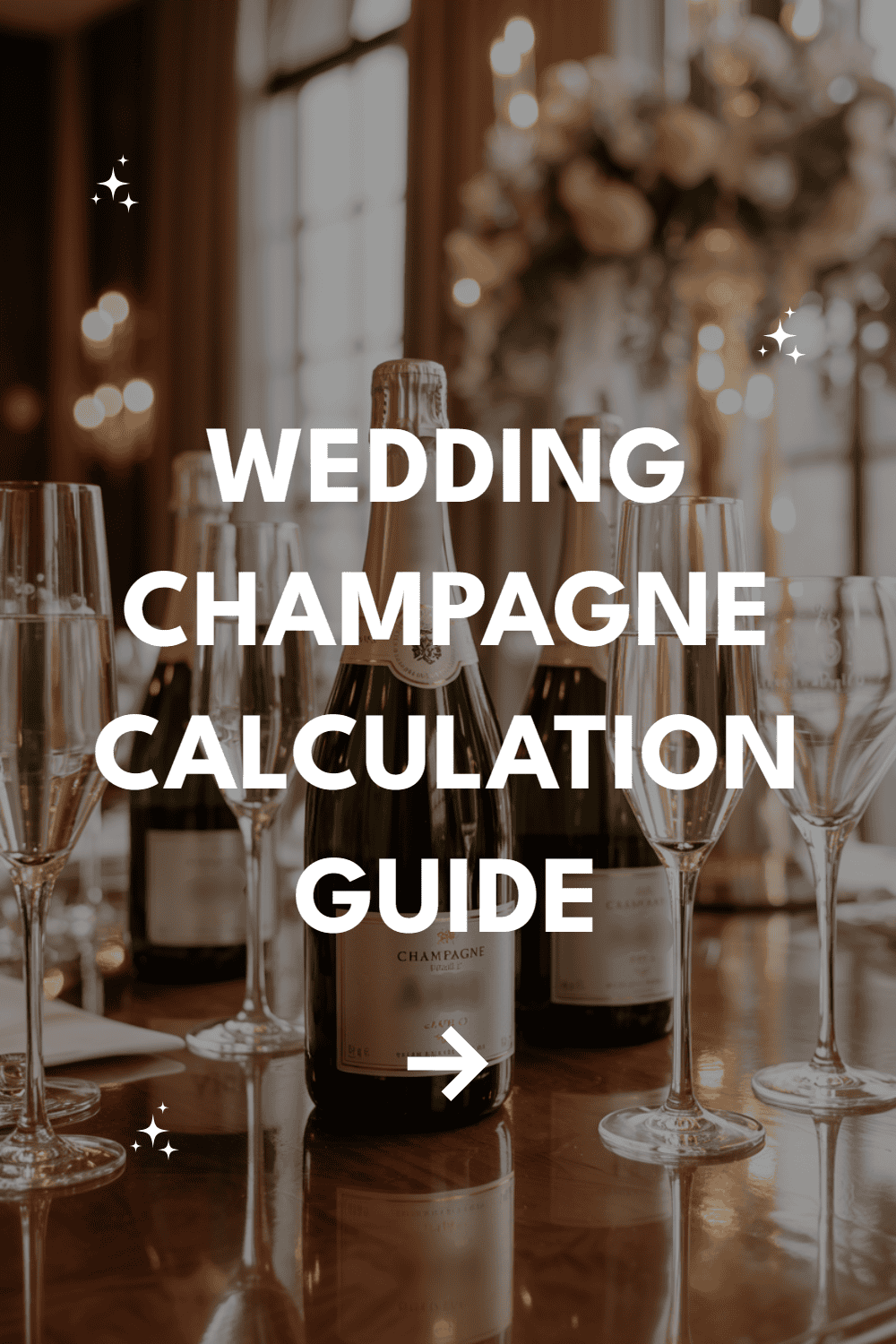Nothing kills the celebratory mood quite like running out of bubbly during your first toast. Let’s figure out exactly how much champagne you need without breaking the bank or drowning your guests.
The Basic Math Behind Champagne Planning
Calculating champagne quantities isn’t rocket science, but it’s trickier than you might think. Most couples either drastically overestimate or fall embarrassingly short.
The standard rule suggests one bottle serves six glasses, but wedding reality is messier. Your great-aunt Martha might nurse one glass all night while your college roommates treat it like a beer pong tournament.
Know Your Guest Demographics
Your guest list tells the real story about consumption patterns. A crowd of twenty-somethings will drink differently than a family gathering with lots of kids and non-drinkers.
Consider the age range, drinking preferences, and cultural backgrounds of your guests. Some families celebrate with gusto while others prefer more modest consumption.
Time of Day Matters More Than You Think
Brunch weddings naturally call for mimosas and lighter champagne consumption. Evening celebrations typically see higher alcohol intake as the night progresses.
Cocktail hour champagne needs differ significantly from reception champagne requirements. Most guests pace themselves differently during various parts of your celebration.
Breaking Down Champagne Consumption by Event Segments
Wedding champagne isn’t consumed equally throughout your celebration. Each segment has distinct consumption patterns that smart couples plan for separately.
Cocktail Hour Requirements
Plan for roughly half a glass per person during cocktail hour if you’re serving multiple beverage options. Guests typically sample different drinks rather than committing to champagne exclusively.
However, if champagne is your signature welcome drink, bump this up to one full glass per person. First impressions matter, and running out immediately sends the wrong message.
Ceremony Toast Calculations
The ceremony toast requires exactly one glass per person—no exceptions. This includes vendors, photographers, and anyone else you want included in your special moment.
Don’t forget about the wedding party, parents, and officiant. These folks often get overlooked in initial counts but definitely deserve to participate in your toast.
Reception Consumption Patterns
Reception champagne consumption varies wildly based on your other beverage offerings. If you’re providing full bar service, champagne becomes more of a special occasion drink.
Expect roughly two to three glasses per person throughout the entire reception if champagne flows freely. Dance floors and celebration energy naturally increase consumption rates.
Seasonal and Cultural Considerations
Different seasons and cultural backgrounds dramatically impact champagne expectations and consumption patterns. Summer weddings often see lighter consumption while winter celebrations encourage heartier drinking.
Holiday and Seasonal Factors
December weddings compete with holiday party season, potentially affecting guest drinking patterns. Some guests arrive already partied out while others embrace the festive spirit completely.
Spring and summer weddings often feature lighter champagne consumption as guests prefer refreshing cocktails and beer. Fall celebrations tend to see more consistent champagne drinking throughout the event.
Cultural and Religious Considerations
Some cultural traditions emphasize champagne toasts while others barely include alcohol. Jewish weddings might focus heavily on the ceremonial aspects while Italian celebrations could feature champagne alongside wine.
Religious considerations might limit your guest list’s drinking preferences significantly. Always consider your specific community’s expectations and comfort levels.
Budget-Smart Shopping Strategies
Champagne costs add up quickly, but smart shopping can stretch your budget without sacrificing quality. The key lies in knowing when to splurge and when to save.
Splurge vs. Save Decisions
Invest in quality champagne for your ceremony toast since this moment gets photographed and remembered most. Reception champagne can be more budget-friendly since it’s often mixed or consumed quickly.
Consider serving premium champagne during cocktail hour and switching to prosecco or cava later. Most guests won’t notice the transition once the party gets going.
Bulk Purchasing Benefits
| Purchase Method | Cost Per Bottle | Pros | Cons |
|---|---|---|---|
| Retail Cases | $15-25 | Consistent quality | Limited selection |
| Warehouse Stores | $12-20 | Bulk discounts | Membership required |
| Direct from Distributor | $10-18 | Best prices | Minimum quantities |
| Wedding Vendors | $20-35 | Convenience | Highest markup |
Warehouse stores often provide the best balance of price and convenience for most couples. Costco and Sam’s Club carry surprisingly decent champagne options at reasonable prices.
Alternative Sparkling Wine Options
Not all bubbles need to be champagne, and your guests probably won’t care about the difference. Smart couples explore alternatives that deliver celebration vibes without the premium price tag.
Prosecco and Cava Alternatives
Italian prosecco offers lighter, fruitier flavors that many guests actually prefer to traditional champagne. Spanish cava provides excellent value with more complex flavors than its price point suggests.
These alternatives work particularly well for cocktail hour and reception consumption. Save true champagne for your ceremony toast if budget concerns are pressing.
Regional Sparkling Wine Discoveries
American sparkling wines from California and New York rival European options at fraction of the cost. Many local wineries offer wedding discounts or custom labeling services.
Exploring regional options also adds personal touches to your celebration. Guests often appreciate supporting local businesses and discovering new favorites.
Storage and Service Logistics
Having enough champagne means nothing if it’s not properly stored and served. Temperature, timing, and service logistics can make or break your celebration.
Temperature and Timing Essentials
Champagne needs at least four hours of refrigeration before serving. Warm champagne tastes terrible and creates messy, explosive opening situations.
Plan your refrigeration space carefully, especially for larger weddings. Coordinate with your venue about storage capabilities and backup cooling options.
Service Staff Coordination
Professional bartenders can stretch champagne further through proper pouring techniques. They also manage consumption pace better than self-service situations.
Discuss serving logistics with your catering team early in planning. Some venues charge corkage fees while others include service in their packages.
Emergency Planning and Backup Strategies
Even perfect calculations sometimes fall short when Uncle Bob discovers his love for champagne. Smart couples always have backup plans ready.
Last-Minute Shortage Solutions
Identify nearby liquor stores that remain open during your wedding hours. Assign a reliable friend or family member as your emergency champagne runner.
Consider keeping extra bottles of prosecco or sparkling wine as affordable backup options. Most guests won’t complain about substitutions during active celebrations.
Leftover Management Plans
Wedding champagne leftovers make excellent gifts for vendors, wedding party members, and helpful family. Plan distribution before your celebration begins.
Unopened bottles store well for future anniversaries and celebrations. Create a small collection for your first year milestones and special occasions.
Making Your Final Calculations
Now comes the moment of truth—translating all this information into actual bottle counts for your specific celebration.
Start with your confirmed guest count and multiply by your estimated consumption per person based on your event timeline. Add twenty percent buffer for unexpected situations and enthusiastic celebrants.
Factor in your budget constraints and venue limitations when making final decisions. Sometimes practical considerations override perfect calculations, and that’s completely acceptable.
Your champagne calculation doesn’t need perfection—it needs to match your celebration style and guest expectations. Trust your instincts about your specific crowd and celebrate accordingly.


